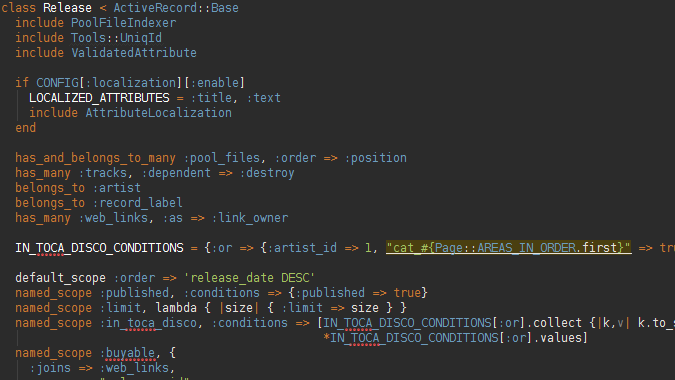Tube Rank: Your Guide to Video Success
Discover tips and insights for optimizing your video presence.
Rails and Tales: Adventures in Coding
Join Rails and Tales for thrilling coding adventures, tips, and tricks! Unleash your inner developer and elevate your coding game today!
10 Essential Ruby on Rails Tips for Beginners
Ruby on Rails is a powerful web development framework that has gained immense popularity among developers. For beginners diving into Rails, understanding its conventions is vital. Here are 10 essential tips to help you navigate your journey:
- Embrace the Rails philosophy: Follow the Convention over Configuration principle to streamline your coding process.
- Leverage the Rails generators: Use built-in generators to quickly scaffold your application components.
- Utilize Active Record: Understand how to interact with your database using Rails’ ORM.
- Get comfortable with the Rails console: It’s a valuable tool for testing and querying your application data.
- Master routing: Learn how to define routes effectively for smoother navigation.
- Implement partials: Use partial views to keep your code DRY and maintainable.
- Explore the asset pipeline: Optimize your CSS and JavaScript assets for better performance.
- Utilize testing: Start writing tests early to ensure a robust application.
- Read the Rails documentation: Make it a habit to refer to the official documentation for best practices.
- Join the community: Engage with the Rails community through forums and meetups for guidance and support.

How to Debug Your Rails Application Like a Pro
Debugging a Rails application can be a daunting task, but with the right tools and methodologies, you can tackle issues like a pro. Start by utilizing the built-in debugging tools provided by Rails, such as the byebug gem. This allows you to set breakpoints in your code, inspect variables, and step through your processes line by line. Additionally, don't underestimate the power of logging; by adjusting the log level in your config/environments/development.rb, you can capture detailed information that reveals the inner workings of your application.
Another effective strategy is to utilize RSpec for testing. It not only allows you to write tests to validate your code but also helps in identifying errors before they make it to production. Furthermore, consider implementing exception tracking tools like Sentry or Rollbar. These tools provide real-time error tracking and can help you pinpoint issues in production environments. By combining these techniques, you will enhance your debugging skills and become proficient at resolving issues quickly and efficiently.
What Are the Best Practices for Building RESTful APIs with Rails?
Building RESTful APIs with Rails requires adherence to several best practices that ensure your API is efficient, easy to use, and maintainable. First, utilize the Rails conventions, which include using resources for automatic route generation. This approach simplifies the process of defining routes and controllers. It's also essential to leverage JSON as the primary response format, as it is lightweight and easily parsed by clients. Implementing proper versioning in your API's URL structure, such as /api/v1/items, allows for smoother transitions when updates or changes are made to the API, ensuring backward compatibility for clients.
Furthermore, error handling is a crucial aspect of building RESTful APIs. Use appropriate HTTP status codes to communicate the result of an API call clearly. For example, return a 404 status for not found errors and 400 for bad requests. Implement a consistent error response format to enhance clarity for clients debugging their calls. Moreover, consider including detailed documentation for your API, possibly generated using tools like swagger or apidoc, which can facilitate a better understanding for developers who interact with your API.